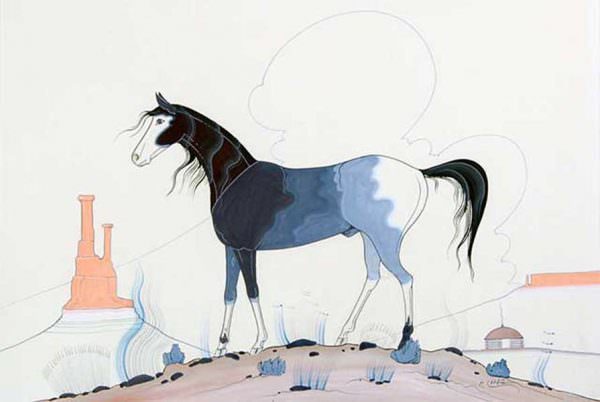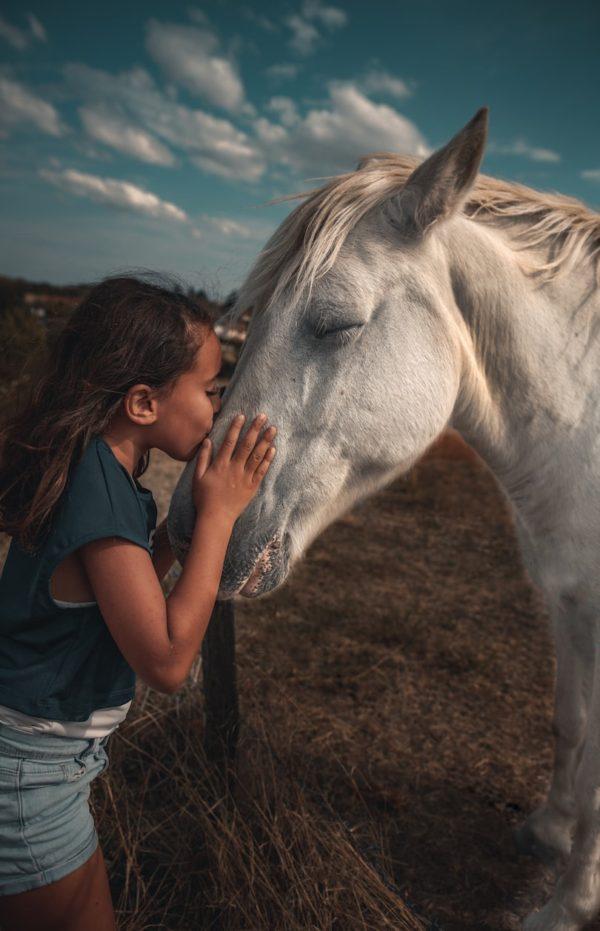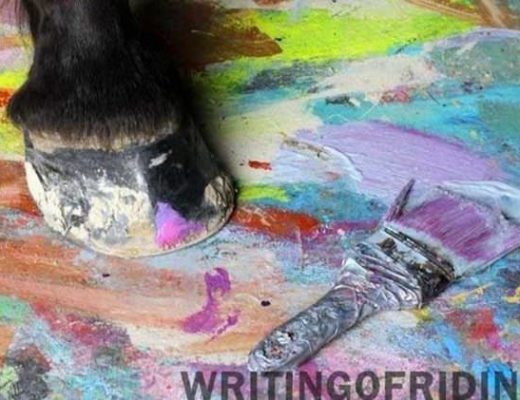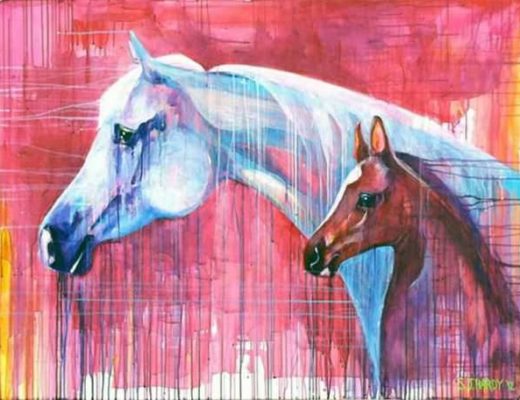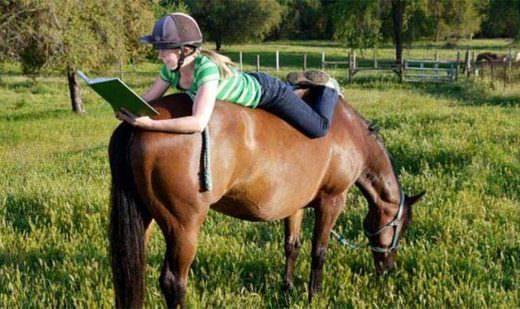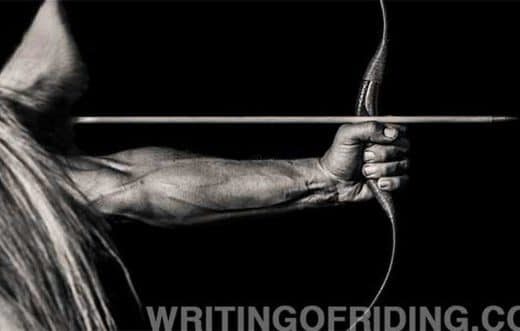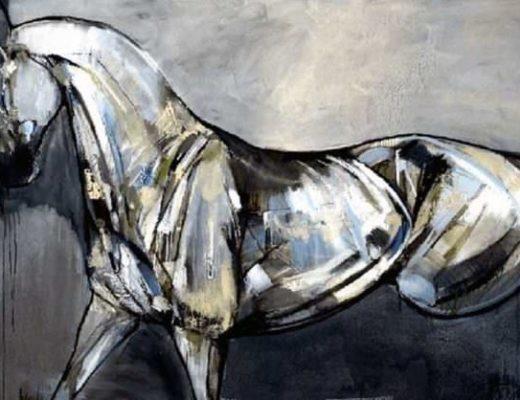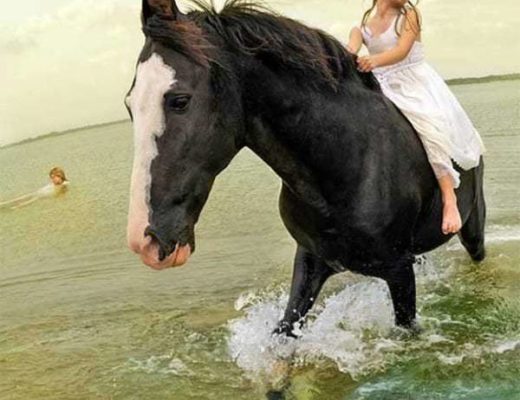Checking in.
Last week, the Seventh Week. Recovering a sense of Connection
This week we turned to the practice of right attitudes for creativity. The emphasis was on your receptive as well as active skills. The essays, exercises and tasks aimed at excavating areas of genuine creative interest as you connected with your personal dreams.
Did you do the task list? How was that? What was the hardest or most interesting part of the tasks?
How many days this week did you complete the morning pages? How was the experience of morning pages this week?
Did you do your artist date this week? What did you do? How did it feel? Are you finding it any easier to contemplate delighting yourself in small ways? In large ways?
Did you experience any synchronicity this week? (Magical coincidences that supported your stated aim?)
Week 8:
Recovering a Sense of Strength
Remember: Creativity is the natural order of life. Life is energy: pure, creative energy. There is an underlying, in-dwelling creative force infusing all of life — including ourselves. It is safe to open ourselves up to greater and greater creativity. Our creative dreams and yearnings come from a divine source. As we move toward our dreams, we move toward our divinity.
There is a logic of colors, and it is with this alone, and not with the logic of the brain, that the painter should conform.
Pablo Picasso
There is a logic to the horse, and it is with this alone and not with the logic of the mind that the rider should conform.
Satisfaction of one's curiosity is one of the greatest sources of happiness in life.
Linus Pauling
The Eighth Week. Recovering a sense of Strength
This week tackles another major creative block: time. You will explore the ways in which you have used your perception of time to preclude taking creative risks. You will identify immediate and practical changes you can make in your current life. You will excavate the early conditioning that may have encouraged you to settle for far less than you desire for your life.
Survival.
One of the most difficult tasks we face as a horseman, as an artist, as a person pursuing a life that is defined by internal rather than external measures, is a very primal one: emotional survival. We must learn to survive loss: loss of hope, loss of money, loss of face, loss of self-belief. In addition to all that we will gain, we will inevitably encounter these losses. They are the hazards of the road, and at once, its signposts. These losses can become real gains, but not in the isolation of our stuck thought processes.
Mental health experts have studied loss and all the modern science will tell you that in order to move through and past loss, we have to acknowledge it and share it. Artistic losses, the emotional losses we suffer, are usually hidden rather than shared. We think they are too silly, too painful, or too humiliating to talk about. THey become emotional scar tissue that blocks or twists further growth. We feel silly for feeling so hurt, so the pain continues to block each following action and idea.
As horsemen we are in a field that is rife with shame. Why this is, we can go on all day about. But it's there. We find we are the least skilled of the students in a new class, and one of the riders makes a comment we can't hear and laughs. A student decides they don't like us and mutters about us to another student. A displeased client puts us down in print. They grain we bought gives the horse the squirts, and a boarder complains we can't get anything right.
As adults, we say, these things happen. But, our creative side, the side that actually gives this work the magic that transports it to something extraordinary — that side is a child.
Perhaps the most damaging form of artistic loss is in criticism. Here, again, we don't mean truthful criticism. When there's a useful kernel of truth in it, we can sort it out and the artistic child will grab the useful bit and run with it. Damage is done by the criticism that contains no essential kernel of truth yet has a certain damning plausibility or an unassailable blanket judgement within it that cannot be rationally refuted.
Our teachers and mentors, the trainers we revere, are authority figures. Their relationship to us emotionally is sacred, no matter the age difference, the authority we afford them makes that relationship like that of a parent and child. When an unscrupulous teacher sees a student as a threat, or drags his or her own emotional baggage into the relationship, and gives baseless criticism designed only to devastate, the student's inner child can be damaged in the same way as a child is damaged by a warped parent. The student emerges from such interchanges feeling ashamed, like a hopeless case, like they were a fool to try.
The Ivory Power.
There is an old adage in academia: those who can, do; those who can't, teach. Often we run into teachers and trainers who, afraid or stuck or constricted in their own creative process, take out their unexpressed frustration, anger and sorrow on their students. They'll do this overtly, in the form of put down and nebulous, unanswerable wet blanket criticism, they'll do it by ignoring the student's successes and not encouraging their unique creative accomplishments. Watch not only for your instructor behaving this way — but for yourself.
Part of learning is taking apart what you are doing, analyzing it, coming to understand it through criticism and by comparison with others' work, whether master work or fellow students. This is the intellectual crafting of the creative process, and it's important in that it opens new doors, unmasks ways we're stuck, offers us new possibilities, new techniques, new avenues to explore.
But… creativity means making mistakes, it means playing with ideas, it means having the freedom to be messy, unfinished, and to play. Early work, no matter how talented you are, is kind of like the messy undergrowth. It's easy to look up at the lofty trees and get daunted and it's easy for the lofty tree masters to look down and forget that the chaotic nature of the new growth is perfect.
Many young creative people get pinched off at the root by this process. Most acclaimed players in any field have an outstanding share of audacity – their success relies not so much on their authentic talent as on having the audacious will to keep playing. The scarification that we endure from stuffing our hurt and shame blocks us both from enjoying our sense of play, and from accessing our real brilliance.
Cameron cites a writer who sent his first novel to an agent who returned it with the comment, “This is half good and half bad. That's the worst kind. I don't even know how to begin to tell you to fix it. My advice is to throw it out.” (Notice the nebulous, global and useless form of this criticism.) The writer stopped writing entirely for 5 years. Then he met Cameron, did the artists way, and at the time of the writing of the book had been writing again for 12 years and had three novels and two movies to his credit.
Just as a teenager must gain independence from toxic parenting, a creative person has to get clear of toxic mentoring. And, we get there by acknowledging it out loud, mourning it, and noticing what interpretation we took from what we heard – and re-writing that script in our own mind.
Like the career of any athlete, we will get injured — and like an athlete if we ignore the injury we'll tear muscles, create more scar tissue and eventually end our career. THe trick is tot know that you will get hurt, and to learn to acknowledge the pain and heal rather than let it cripple us into silence.
Gain Disguised as Loss
Art is the act of restructuring time. It's all in how you frame it: every loss must always be viewed as a potential gain. Every end is a beginning. We tend to focus on what we lost, on the pain of the passage — we need to refocus, reframe, metabolize pain as energy — if we know that every cloud has a silver lining, then having acknowledged the pain, we look for the silver. We ask “How can this loss serve me? Where does it point my work?” Film director John Casavettes once said “In order to catch the ball, you have to want to catch the ball.” We have to get over our fascination with complaining about the lousy curves we're thrown and stretch, lunge, reach out for what we really want.
Cameron tells story after story of artists, writers, directors including herself being thwarted in their careers by one setback or another, and finding another door. “Non illigitimi te carborundum” was a graffiti found in prisoner of war camps in WWII. Roughly translated it means “don't let the bastards get you down.”
The key is action Pain that is not used profitably quickly solidifies into a leaden heart, and this makes any action difficult. We aren't all raised knowing how to nurture ourselves, so what sort of action should we take? When we're hurt, the first thing is to notice that we're hurt, and immediately take some small action to support the creative child within us. We can simply pick a flower or buy a chocolate. The action says from the adult part of you to that injured child part “I acknowledge your pain, I promise you a future worth having.” But we don't stop there. THe next step is that instead of getting obsessed with the question “Why me?” we progress to, “Okay, then, what next? How do I get there from here? Where's the next door?”
Age and Time: Product and Process
One of the constant comments people make about embarking on creative pursuits is, “I'm too old.” In order to ride flawlessly, you really have to start as a two year old, right? You really can't get the breaks unless your family had all the money to set you up as a kid, right? Your friends who started two years ago are already outstripping you, and you can't catch up. Right? Wrong. The statement “It's too late,” is always used to avoid facing fear.
Another interesting side to this is “I'll do it when I am retired.” We allow old people to be a little eccentric. THey are permitted to lock themselves away and be creative, be cantankerous, follow their dreams. We don't want to look crazy and we don't want to take risks.
At the heart of the anorexia of artistic avoidance is the denial of process. We like to focus on having learned a skill, made our mark; we like to think about the ribbons and trophies and accolades at the end. But creativity, the juice of the process, lies in the doing, not in the having done. It's the ego that's satisfied by the accolades. It's the soul that delights in the play of getting there.
In a sense, no creative act is ever finished, because there's always more to learn. You'll never stop learning to ride. This doesn't mean that what you've accomplished so far is worthless, far from it: it just means that doing the work points to better and better work to be done.
Focused on process, our lives feel interesting and adventurous. Focused on product, we can feel barren and foolish. FIxated on a need to have a product to show for our creative exploration, we deny our curiosities and cast critical judgement on our creative play.
Filling the Form
Focused on the finished product, we can't achieve anything. We're mesmerized by the size of the task. Most of the time, what is really needed is just the next small step. Filling in the form. Rather than obsess about the perfect finished product, go ride a horse. Go do the work in hand. Do one session every day, and each builds quietly to the next. There is always one small action you can take toward your goal each day.
All too often people harbor an unspoken fear that if they lived the life they think they want, they have to abandon the life they know. They think they will be changing their lives in one fell swoop. “I can't become a professional trainer, my kids need me to stay home and not work weekends.” The blocked creative sets the jumps too high and stops themselves before they start. Instead of riding, they do all the things they have set up as “I can't be a rider until…” They polish and repolish their tack, they sell their horse, they translate de la Gueriniere from the original French again just in case, and of course, they go study French…
Obsessed with the belief that committing to this course is a huge leap, we ignore the baby steps and rush to the cliff edge and weep and gnash our teeth “I can't leap, I can't leap..” So, who's asking you to leap? Take baby steps. The whole I can't leap thing is just the drama of a creative personality. Creativity requires movement, however small. We'd rather sit and contemplate the odds, we'd rather ask “what's the use?” than ask “what's next?”
We are addicted to anxiety in lieu of action.
TASK: Watch yourself for a week. See if you don't indulge in anxious thoughts rather than take the next creative step. When we allow ourselves to wallow in the big questions we avoid finding the small, daily answers that bring us step by step to the right direction.
Early Patternings: An exercise
Complete the following phrases:
- As a kid, my dad thought working with horses was ______________, that made me feel ______________. I remember one time when he ______________. I felt very ______________ and ______________ about it, I've never forgotten about it.
- As a kid, my mom taught me that daydreaming was ______________. She'd tell me to snap out of it by reminding me that ______________.
- The person I remember who believed in me was ______________. I remember one time when ______________, I felt ______________ and ______________ about that, and I never forgot it.
- The thing that ruined my chance to be a creative artist, or a truly creative horseman was ______________. The negative lesson I got from that which wasn't logical but I still believe it, was that I can't ______________ and still follow that dream.
- When I was little I learned that ______________ and ______________ were big character flaws or sins that I had to especially look out for.
- I grew up thinking that riding masters were ______________ people.
- The teacher that shipwrecked my confidence was ______________. I was told ______________. I believed this teacher because ______________.
- The mentor who gave me the best role model was ______________.
- When people say I have talent I think they want to ______________.
- The thing is I'm suspicious that ______________.
- I just can't believe that ______________.
- If I believe that I am really talented, then I am made as hell at ______________ and ______________ and ______________ and ______________ and ______________ ….
Affirmations
Select five of these affirmations to play with this week. Write them in your morning pages, write the “blurts” that you respond with, invent affirmations for those “blurts”.
- I am a talented person.
- I have a right to be a horseman.
- I'm a good person and a good horseman.
- Creativity is a blessing I accept.
- My creativity blesses and helps others.
- My creativity is appreciated.
- I am now more generous with my creative self.
- I am now more gentle with my creative self.
- I now accept hope.
- I now act affirmatively.
- I accept creative recovery.
- I now allow myself to heal.
- I now believe that God loves artists and horsemen.
- I now believe that the universe supports me as a horseman.
Tasks.
The Eighth Week
Morning pages and Artists date — remember, it's supposed to delight you.
Goal Search.
Even if this is hard, do it anyway. The act of imagining a dream in concrete detail helps bring it into reality. If you find you have more than one dream, do it for each one you'd like to play with. Think of this goal search as a preliminary architect's sketch of the life you wish you could have.
The steps:
- Name your dream. Write it down. In a perfect world, I would love to be a ______________.
- Name one concrete goal that signals to you that you have accomplished this dream. On an emotional compass, this goal is true north. (Two people may want to be a brilliant horseman, but one feels that goal very personally , the other as a professional aim. One might feel the evidence he's reached the goal is that he is able to train a foal from start to FEI level at home, the other would find his evidence in getting on the cover of Horse Illustrated, or winning Rolex, or placing on the Olympic Team.)
- In a perfect world, in five years where are you relating to your sense of true north?
- What action can you take this year that will move you toward that goal?
- What action this month? This week? Today? Right now?
- List your dream. List it's true north. Select a role model. Make an action plan for five years, one year, one month, this week, today, right now. Choose an action.
New Childhood.
What might you have been if you'd had perfect nurturing as a child? Write a page of this fantasy childhood. What were you given int hat childhood that you did not get in your real one? Can you re-parent yourself now in that direction?
Color Schemes.
Pick a color and write a quick few sentences describing yourself in the first person as that color. “I am silver. Hightech and ethereal, the color of dreams and accomplishment, of half light and in between. I feel serene.” Or maybe, “I am blue, the color of introspection and alone-ness. The color of water, of the depths of the sky, of the Vedic Gods. I feel unfathomable.” What is your favorite color? What do you have that is that color? Can you decorate your room, your house, to reflect who you are?
Fantasy Actions.
List five things you are not allowed to do. Kill your boss. Scream in church. Go outside naked. Create that thing on paper. Write it, draw it, act it out, collage it, put some music on and dance it.
Style Search.
List 20 things you like to do and answer these questions for them:
- Does it cost money, or is it free?
- Expensive or cheap?
- Alone or with someone?
- Job related?
- Physical risk?
- Fast paced, or slow?
- Mind, body or spiritual?
Ideal Day.
Plan a perfect day in your life now, using the information from the style search above.
Ideal Ideal Day.
Plan a perfect day without ANY restrictions. Wherever, whatever, with whomever your heart desires.
Choose one festive aspect from your ideal ideal day. Allow yourself to live that aspect. You may not be able to ride the Palio today, but you can make an amazing feather head piece for your horse to wear next ride.
